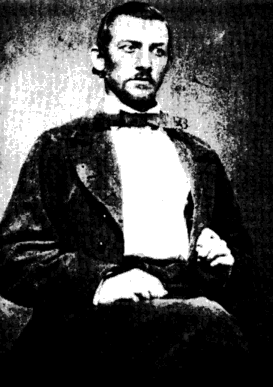
CAPTAIN JAMES HENRY TEVIS
Arizona Pioneer and Confederate Soldier
by Robert P. Perkins
Few men could claim a life filled with as much adventure as James Henry Tevis. He was one of the first Americans to come to Arizona when it became part of the United States in the 1850s, and had, even before the War Between the States, more adventures than most men have in a lifetime. He had a lengthy and distinguished career as a Confederate soldier, during which he suffered several wounds, and after the war returned to Arizona, where he played a prominent role in the development of mining and railroads in southeastern Arizona. His early life would, eventually, be dramatized on television by Walt Disney during the 1950s. It is this thoroughly fascinating character out of Arizona history who will form the subject of this article.

James Henry Tevis
James Henry Tevis was born at Wheeling, Virginia (now in West Virginia) on July 11, 1836. He was the son of John D. Tevis and his wife Elizabeth (McNamee) Tevis.1 Little is known of his early life and how he ended up in the far west. He (possibly with his family) may have gone west during the California Gold Rush, for Tevis was certainly in California by 1855. On May 3, 1855 a "filibustering" expedition set sail from San Francisco, headed for Nicaragua.2 Under the command of "General" William Walker, sixty men sailed on that day, one of whom was 18-year-old James Henry Tevis.3

The "filibusters" were a uniquely American phenomenon arising out of the national conviction of Americaís "manifest destiny" which was current during the 1840s and 1850s. Groups of private citizens organized military expeditions to Mexico and Central America with the purpose of conquest, either with the intent of adding the newly won territories to the United States, or carving out private empires for themselves. These men, and the expeditions themselves, were called "filibusters." Despite being in violation of U.S. neutrality laws, these adventurers enjoyed wide support in the United States, and especially in the South, where many of the "fire-eaters" and other pro-slavery advocates recognized that any new territory gained in Latin America could be organized into new slave states. And although the filibusters were generally organized in California, the men who joined them were generally Southerners as well. William Walker, a native of Tennessee who was a firm believer in the need for slaveryís expansion into new territories, fit this mold. The expedition to Nicaragua was in fact Walkerís second such venture...he had led another expedition in a failed attempt to conquer the Mexican states of Baja California and Sonora in 1853-1854.4
It was Walkerís reputation as a leader, gained during his failed Mexican filibuster, which lead one of the factions in the civil war then raging in Nicaragua to appeal to him for aid, and it was under this pretext that he organized his expedition. However, like all of Walkerís other filibustering expeditions, the incursion into Nicaragua was not to meet with success, although he briefly managed to get himself declared President of Nicaragua, and his men managed to hold out against the combined Nicaraguan and Costa Rican armies for two years. However, the filibusters were finally forced to surrender in May 1857, being given the unusual courtesy of being allowed to leave with their lives.5
Little is known about the participation of James Henry Tevis in Walkerís Nicaraguan Filibuster of 1855-1857. However, it would appear that he must have acquitted himself well and earned the respect of his comrades in arms. The April 24, 1860 edition of the WEEKLY ARIZONIAN, a newspaper published in Tucson, Arizona, reported that Tevis "held a commission under General Walker in Nicaragua," which if true, was quite an accomplishment for an 18-year-old lad!6
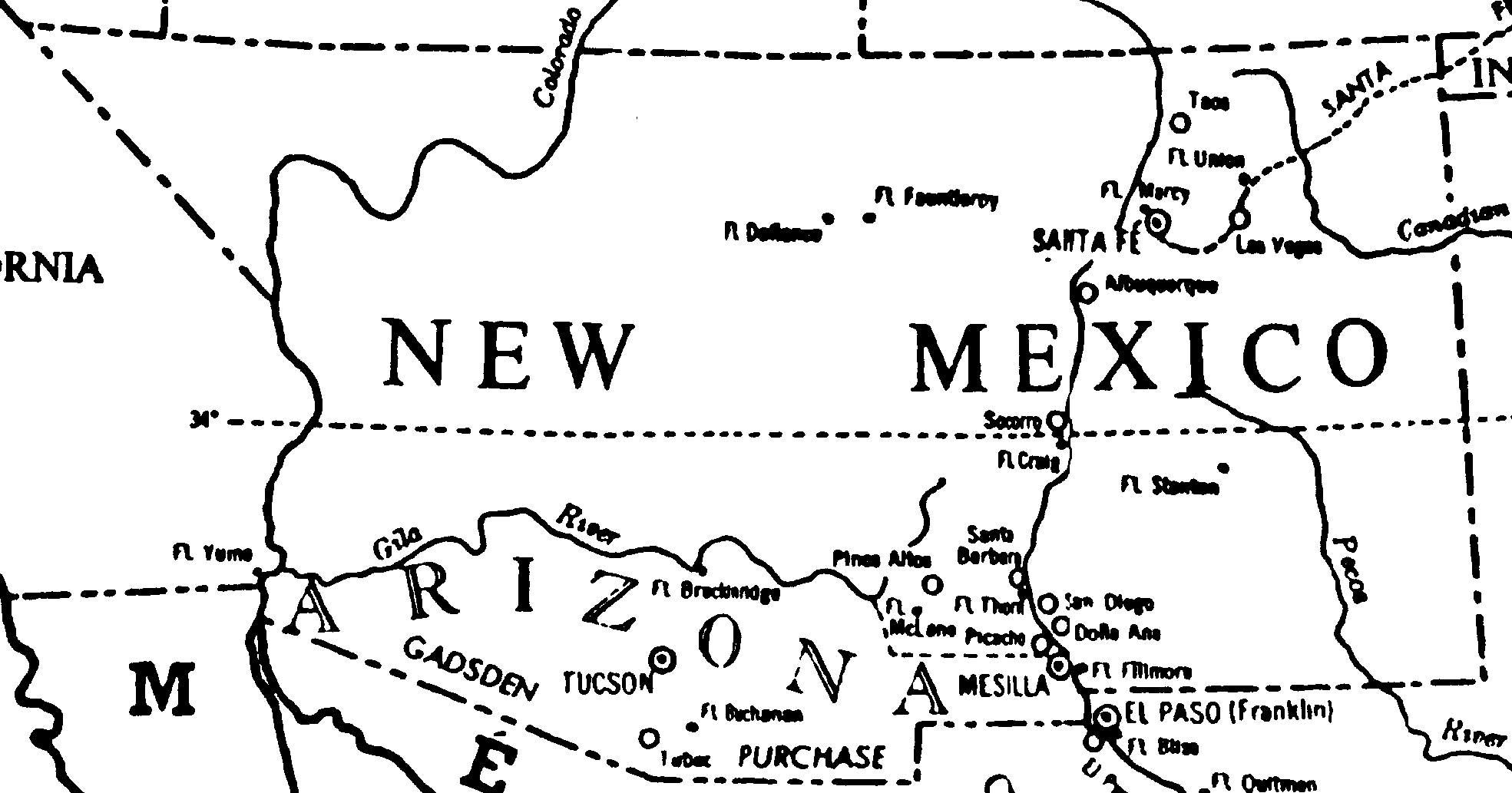
NEW MEXICO TERRITORY AS IT WAS WHEN TEVIS ARRIVED IN 1857
After returning from his Nicaraguan experiences, Tevis apparently ended up in Texas, where he joined a party of 24 men who were organizing a wagon train headed for Arizona.7 In 1857 what we now call Arizona was part of the United States Territory of New Mexico, and the term "Arizona" itself referred, at that time, only to the region south of the Gila River...roughly the southern 1/3 of the present day States of Arizona and New Mexico. Tevis arrived with this party at Mesilla, on the Rio Grande near present-day Las Cruces, New Mexico, sometime between July and September of 1857 (Tevis, writing years later, could not remember the exact date), and shortly afterward he was in Tucson.8
Soon after his arrival in Tucson, James Henry Tevis struck up a friendship with Mose Carson, older brother of the famous mountain man and trapper Kit Carson. It was from Mose Carson that Tevis would learn how to survive and prosper in the arid Arizona wilderness. Carson, probably in late September 1857, invited Tevis to join him on a hunting trip up the San Francisco River. On their return trip Tevis had his first encounter with the Apaches, when a band of Mangas Coloradasís Mimbrenos attacked them near present-day Clifton, Arizona. After a running gun battle which carried them all the way back to the outskirts of Tucson, the Apaches finally gave up the chase, and both Tevis Carson escaped with their lives.9

RICHARD EWELL AS A CONFEDERATE GENERAL
A few days after his arrival back in Tucson (the date is uncertain, but probably sometime in late September or early October 1857), Tevis left for Fort Buchanan, on the banks of Sonoita Creek near present-day Patagonia. It was there that he would make the acquaintance of another Virginian, Captain Richard S. Ewell (later, as a Confederate Lt. General, to command a Corps in Robert E. Leeís Army of Northern Virginia), with whom he also became friends. He joined a expedition of Captain Ewellís troops who were sent out to locate some stolen livestock. They ended up in Apache Pass, located at the northern end of the Chiricahua Mountains, which was the home of several hundred Apaches under chiefs such as Cochise, Old Jack, Esconolea, and Francisco. At the pass they came upon employees of the Butterfield Overland Stagecoach Company who were erecting a stagecoach station. Tevis decided to remain behind when the soldiers returned to Fort Buchanan, and took a job as a laborer with the Butterfield construction crew. He must have favorably impressed his co-workers, because he was shortly afterward hired to serve as the agent for the new station.10
Tevis would serve as agent in charge of the Butterfield station at Apache Pass until early 1860. During this time he would make the acquaintance, sometimes under life-threatening circumstances, of several of the Apache war chiefs, including Cochise, Old Jack, and Esconolea. He would save the life of, and in the process befriend, Esconolea, who would teach him the Apache language and Apache warfare tactics and tracking skills. All of these would be very useful for young Tevis later on. And, although neither man knew it at the time, Esconolea would one day pay his debt in full and save Tevis himself from death. His relationship with Old Jack, and especially Cochise, was always strained, and it would be a final rift with Cochise which finally caused him to resign his post as agent of the Apache Pass Station in the spring of 1860.11

LEWIS OWINGS
GOVERNOR OF THE PROVISIONAL TERRITORY OF ARIZONA, 1860
Tevis returned to Tucson in April 1860, to find that a Convention had been held which had declared the creation of a Provisional U.S. Territory of Arizona (the proceedings of this convention were never ratified by the United States Congress, so the Provisional Territory never became a legal entity. But for a time it did operate as a de facto, if not de jure, government for Arizona). Dr. Lewis Owings had been elected Governor of the Provisional Territory, and upon hearing that Tevis had arrived in Tucson, appointed him to raise the first of 3 companies of Arizona Rangers for the protection of the Territory from marauding Apaches and bandits. Tevis would later credit his appointment to the fact that "I was the only white man in Arizona who spoke the Apache language and understood the signals, hence my success in my engagements with them."12 This company is generally considered to be the origin of the later Arizona Rangers police force, which was to gain fame in Arizona for its pursuit of desperados during the last decades of the 19th Century.13

MANGAS COLORADAS
CHIEF OF THE MIMBRENO APACHES
In May 1860, one Jacob Snively discovered gold at Pinos Altos, New Mexico (north of present-day Silver City). Tevis immediately headed to Pinos Altos to make his fortune, and to recruit for his new ranger company.14 The Rangers would be needed at Pinos Altos, because the discovery of gold, and the influx of white men into the region, had led Mangas Coloradas and the Mimbrenos onto the warpath. Tevis never did strike it rich at the diggings, but he was kept busy leading expeditions against the ever-troublesome Apache.15
On one of these campaigns, Tevis and two of his men were captured by a large party of Mimbreno. Tevis knew his chances of survival were not good, since the usual fate of prisoners of the Apache was death by slow torture. His fears were dramatically sharpened when, soon afterward, Cochise and his band rode into the camp. In their final altercation at Apache Pass, Cochise had said, "Tevis, I shall burn you alive and dance while you are burning." Cochise was delighted to find his old enemy a captive, took charge of the prisoners, and headed back to Apache Pass. Along the way, the three men were continuously tortured, and at one point Tevis was forced to watch as his comrades were hung, upside down, with their heads suspended two feet above the ground. A fire was built underneath their heads and the unfortunate victims were slowly roasted alive. Cochise continuously reminded Tevis that a special fate awaited him at Apache Pass.16
When they finally reached Apache Pass, the Apaches held a grand celebration during which the warriors got drunk on tiswin. Finally, late that night, the celebration died down, and the inebriated Apaches fell asleep...all except one. Tevisís old friend Esconolea had retained his wits through the celebration, and he now came to Tevis. Applying medicine to Tevisís wounds, he released Tevis from his bonds, and gave him back his two six-shooters, saying "I borrowed your six-shooters from Cochise while he was sleeping, thinking you might need them." Tevis was too badly injured to walk, so Esconolea picked him up and placed him onto the back of a waiting horse, whose hooves had been wrapped with deerskin to muffle sound. He then said, "Good, run! I must go back and pretend to be drunk with the rest, for when Cochise awakens and finds you gone, he will be in a bad humour." With a grin, Esconolea slipped away into the darkness. Tevis rode off and made his escape, and he never saw Esconolea again.17

A CONFEDERATE STARS AND BARS FLAG
Tevisís escape from certain death at the hands of Cochise occurred in late 1860, and shortly afterward he, along with the other citizens of Arizona, watched as the nation slowly began to tear itself apart. The election of Abraham Lincoln to the Presidency in November 1860 lead to the secession of South Carolina from the Union on December 20, 1860. Six other states left the Union over the next month-and-a-half, and in February 1861 delegates from the seceded states met at Montgomery, Alabama, to form a new nation...the Confederate States of America. News of this development reached Arizona in early March 1861, and on March 16, a Convention of the People of Arizona was held at Mesilla to discuss Arizonaís stance with regard to the ruptured Union. It was decided that Arizona should secede from the U.S. Territory of New Mexico, and apply for annexation by the new Confederacy.18 Soon a Confederate "Stars and Bars" flag could be seen flying over the town of Mesilla, clearly visible to the Federal garrison at Fort Fillmore, directly across the Rio Grande River from the town. The local garrison commander...Colonel William W. Loring, who would later resign his post to serve as a Confederate General...took no action to quell these acts of open rebellion against Federal authority. Thus the situation remained for several months.19
It is unknown what, if any, part James Henry Tevis played in these proceedings. In all likelihood he was still at Pinos Altos, engaged in mining, and did not directly participate. He would, shortly after the Mesilla Convention, disband his Arizona Ranger Company, possibly because he felt that the authority under which it was raised no longer existed, with the secession of Arizona from the Union.20 But as a Southerner, he certainly supported the secessionist movement in Arizona and, of course, in the Confederacy itself, and he would, before the year was out, have his chance to fight for the cause of Southern Independence.
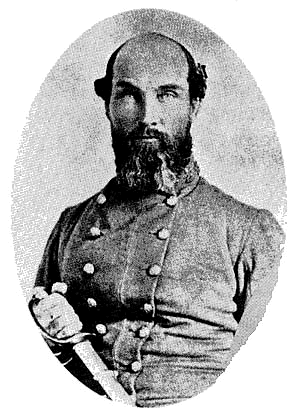
LT. COLONEL JOHN ROBERT BAYLOR
SECOND TEXAS MOUNTED RIFLES
On July 25, 1861, Lt. Colonel John Robert Baylor, Second Texas Mounted Rifles, led a force of 250 Confederate cavalrymen up the Rio Grande from his base at Fort Bliss, Texas. By the end of July 27, Baylorís force had managed to capture the 700 men of the Federal garrison of Fort Fillmore virtually without a fight. The Confederate commander now found himself in possession, by default (as his was the only military force of any consequence left in the area), of virtually the entire southern half of the Territory of New Mexico. On August 1, Baylor issued a Proclamation declaring the creation of the Confederate Territory of Arizona, with himself as Governor. The new Territory would consist of all of the old Territory of New Mexico, south of 34 degrees north latitude, extending from the Texas border to the Colorado River.21
Soon after creating the new Territory, Baylor called up the various local militia companies in the Territory and mustered them into the Confederate service.22 He also called for volunteers to join these companies, or other units, to defend the new Territory from the various threats...Yankees to the north, Mexican bandits to the south, and Apaches everywhere in between...which it faced. James Henry Tevis responded to this call, and in August 1861 joined the San Elizario Spy Company, commanded by Captain Bethel Coopwood, as a Private.23 The San Elizario Spy Company had been formed at El Paso on July 11, 1861...even before Baylorís invasion of New Mexico....but Captain Coopwood and most other members of the Company were Arizona men. Thus it was a natural choice for Tevis to join.
BETHEL COOPWOOD
Private Tevis was soon in action with the San Elizario Spy Company. The company conducted scouts and forays, mainly northward along the Rio Grande, pursuing hostile Indians and skirmishing with Union patrols sent down from Fort Craig, about 80 miles north of Mesilla on the Rio Grande.24 On September 27, 1861, the company was attacked by a Union force twice itís size at a place called Canada Alamosa, approximately 35 miles south of Fort Craig. Despite being heavily outnumbered, in a nasty four-hour fight, the Confederates drove off their attackers, inflicting 12 or 13 killed and an unknown number of wounded for a loss of 2 men killed and 8 wounded. Captain Coopwood, in his report of the battle, specially mentions Private Tevis, who was given command of a platoon (normally the job of a Lieutenant) in spite of his lowly privateís rank, and ably performed his duties.25
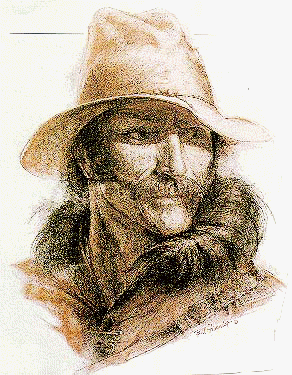
SHEROD HUNTER
Little is known of Tevis or his activities over the next few months, and doubtless he was still with the San Elizario Spy Company, patrolling along the Rio Grande and skirmishing with Yankees from Fort Craig. The next time we find definite news of him is in January 1862, when he transferred from the San Elizario Spy Company into a new company which was being raised by Captain Sherod Hunter. This company was to be the first of a proposed regiment of Arizona Rangers being created by Confederate Governor Baylor for the purpose of frontier defense.26 Tevis and Hunter were long-time friends, having met shortly after Tevis arrived in Arizona back in 1857, and Hunter was looking for a capable and experienced leader to serve as Second Lieutenant in the new Company.
The new Company A, Baylorís Regiment of Arizona Rangers, would be mustered in at Dona Ana, near Mesilla, on January 25, 1862.27 However, even before that date, Lieutenant Tevis was definitely under Hunterís command, and involved in a rather unpleasant mission at Mesilla. On January 2, 1862, Governor Baylor and 550 men had surrounded the town of Canada Alamosa, having heard that a Union force was encamped there. However, when they arrived, they found that the Yankees had evacuated the town on the day prior. It was immediately suspected that disloyal elements within the community had "tipped off" the Unionists, allowing them to escape the trap. After an investigation, it was found that there were indeed "traitors" in their midst, in the form of two men named Marshall and Applezoller. On January 19, 1862, Governor Baylor ordered Captain Hunter to arrest these men, and then directed that they be "questioned and interned." Hunter gave command of the detachment assigned to carry out this task to Lieutenant Tevis. It is unclear what happened next, but Marshall ended up dead, hanging from a cottonwood tree outside town. One account states that Governor Baylor ordered that the prisoners be "hoisted by the rope" to induce them to reveal information about Union strength at Fort Craig, but Marshall was hung too long and died. Another account states that Marshall, his hands tied, was taken to the cottonwood and hung, after which other prisoners, including Applezoller, were marched past his body, one by one, and told he had been hanged "as a traitor to his country." A rope was then placed around Applezollerís neck and he was hoisted for a few seconds before being lowered to the ground. Applezoller and the other prisoners were then taken back to their jail cell. In 1866, a grand jury in Dona Ana County, New Mexico, returned a true bill charging murder in the death of Marshall, and Tevis was among several former Confederates charged. However, the charges were subsequently dropped, and Tevis never stood trial for his actions that day.28
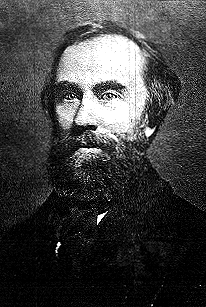
COLONEL JAMES REILY
On February 10, 1862 Company A was ordered to occupy Tucson, the most important town in the western portion of the Confederate Territory of Arizona.29 Tucson's adobe houses and 3,000 inhabitants were strategically located astride the only road leading east from California toward the Confederate enclave in the Mesilla Valley, and thus was the ideal spot to place an advanced Confederate outpost to watch for the approach of invading Yankees from California. By taking possession of Tucson, The Confederates would also be making good on their claim to possession of Western Arizona, which up to now had existed only on paper.30
Traveling with Company A was a detachment of Captain Thomas Helmís Arizona Guards, serving as escort for Colonel James Reily. In command of this detachment was Lt. Jack Swilling. Reily was on a diplomatic mission to the Governor of the Mexican State of Sonora, and Hunter had been ordered to see that Reily was escorted safely to the border, "or to some place where he can obtain an escort from the Mexican authorities."31
Company A arrived in Tucson on February 27, 1862, and on March 1, they held a ceremony in which they raised the Stars and Bars over the town plaza.32 Thus began the most significant campaign in the Company's career as a Confederate Army unit. Company A would occupy Tucson until May 14, 1862, when the approach of a 2,000-man Union force under the command of Colonel James Henry Carleton, the so-called "California Column," forced them to retreat back to the Mesilla Valley. The invasion of Arizona by this Union force would have come much sooner save for the brilliant hit-and-run tactics employed by Captain Hunter and Company A. Elements of Company A managed to capture, without firing a shot, an advanced detachment of the 1st California Cavalry on March 18, 1862, and clashed with Union forces twice, at Stanwix Station (March 30, 1862, generally considered to be the westernmost skirmish of the War Between the States) and Picacho Pass (April 15, 1862, generally considered to be the westernmost battle of the war). The tiny Confederate force destroyed reserves of hay stored along the route from California to Tucson, and confiscated 1,500 sacks of wheat stored for the Union forces at the villages of the Pima Indians (on the Gila River, about 30 miles south of present-day Phoenix, Arizona, forcing the Yankees to halt at the villages while new supplies were gathered. The net effect of Company A's activities was to delay the advance of the California Column for over a month, which probably saved the Confederate Army of New Mexico (the main Confederate force in Arizona and New Mexico, which had advanced northward along the Rio Grande to capture Albuquerque and Santa Fe before being defeated at the Battle of Glorietta Pass in March 1862 and forced to retreat back to Mesilla) from being intercepted and destroyed by the California Column as it retreated through the mountains back to the Mesilla Valley during April 1862.33

LT. JACK SWILLING, ARIZONA GUARDS
However, Lieutenant Tevis would miss most of the early stages of the campaign. When Colonel Reily left Tucson for Sonora on March 3, his escort was commanded not by Lt. Swilling (who had been assigned to command it), but by Lt. Tevis instead. There is no explanation given in any of the surviving records as to why this change was made. L. Boyd Finch has speculated that since Tevis was known to be familiar with the Tubac area and northern Sonora, and Swilling was familiar with the Butterfield Overland route to California, the change may have been made to better utilize the respective skills of the two men.34 And this is probably as good an explanation as any. Lieutenant Tevis and the Confederate escort were halted at the frontier town of Magdalena and a Mexican escort was furnished in its place, so Tevis and his 20-man command were probably back in Tucson within less than a week.35 But by that time, Sherod Hunter and the main part of Company A were already at the Pima Villages. He would play no further role in the campaign until after the Battle of Picacho Pass.
We do have one interesting tidbit from the period before Picacho Pass. When Colonel Reily returned from Sonora in early April, he stayed a few days in Tucson before heading back to Mesilla. Reily and Tevis had apparently struck up a friendship on the trip down to the Mexican border, and Tevis had convinced Reily of the riches to be made at Pinos Altos. On April 4, two days before Reily departed for Mesilla, he and Tevis concluded a business deal in which Tevis sold him 200 yards of a quartz vein in a mining camp.36
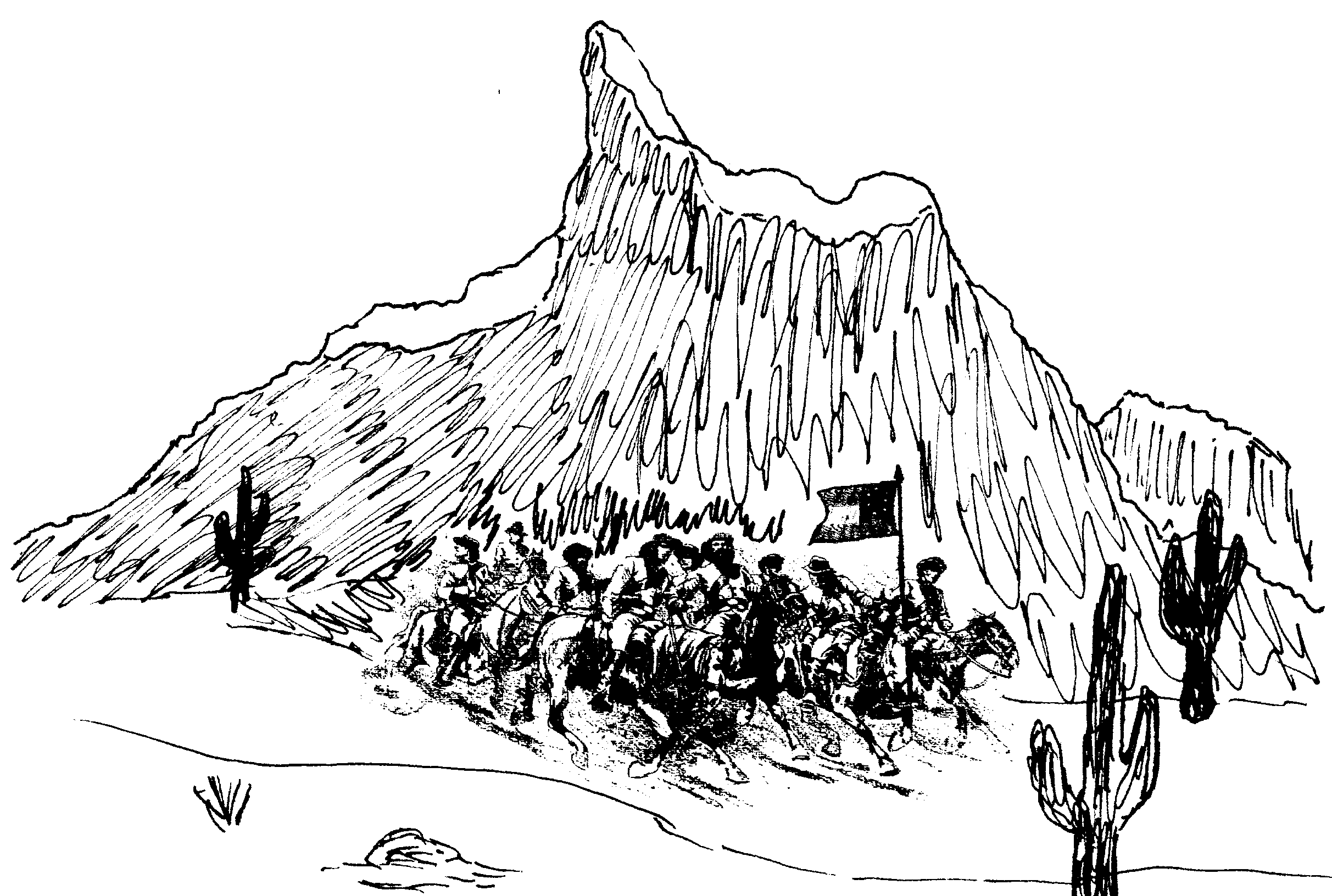
CONFEDERATE CAVALRY RIDE AWAY FROM PICACHO PASS
Lieutenant Tevisís next role in the campaign occurred on April 16, 1862. In the wake of the battle at Picacho Pass, Captain Hunter sent Lieutenant Tevis, with ten men, to Picacho Pass in search of three men who were missing after the engagement (they had been captured by the Unionists at the outset of the battle). Tevis reported that he had seen the Union force, which he estimated at 200 cavalry and five wagons (a remarkably accurate count) retreating in the direction of the Pima villages, but had found no sign of the missing men. Armed with this information, Hunter had written to Governor Baylor, requesting a reinforcement of at least 250 men, with which he felt he could hold Tucson for the Confederacy.37 When no reinforcements were forthcoming, Hunter decided to evacuate Tucson. Company A left Tucson on May 14, leaving behind a small detachment under the command of Lt. James Henry Tevis to watch for the approach of Union forces from the north.38 Unknown to the Confederates, on that same day, the Union California Column finally left its bivouac at the Pima Villages for its final advance on Tucson.39 Lt. Tevis and his detachment were surprised and almost captured when the Yankee cavalry charged into town on May 20. Recalling the incident years later, Tevis candidly described his reaction to the entry of the Union troops: "They got too close for my health and I left." Tevis and his men managed to escape and rejoin the main body of Company A a few days later.40
COLONEL WILLIAM STEELE, SEVENTH TEXAS CAVALRY
PICTURED IN GENERAL'S UNIFORM LATER IN THE WAR
Company A arrived back in La Mesilla on May 27, 1862.41 Once there it was combined with the Arizona Guards (under the command of Captain Thomas Helm) and the Arizona Rangers of Mesilla (under the command of Captain Granville Henderson Oury) to form a battalion of Arizona cavalry under the command of Lt. Colonel Philemon T. Herbert.42 The said battalion was part of a detachment left behind, under the command of Colonel William Steele, to watch for the approach of Union forces from the north and west as the bulk of the Confederate Army of New Mexico retreated to safety in San Antonio, Texas. During this period Company A took part in foraging activities in the countryside surrounding La Mesilla, and on July 1, 1862 it clashed with a band of native Mexican guerillas (none of the Confederates were killed or wounded, but several lost their horses and equipment as a result of the engagement). Little is known about what role, if any, James Tevis may have had in all this. A few days later, on July 7, the approach of Union forces forced the Confederates to abandon the Mesilla Valley, and the Confederate Territory of Arizona, forever.43
Company A was among the last of the Confederate units to leave Arizona...indeed, Tevis would claim (after the war) that Company A was THE last Confederate unit to leave, and that Tevis himself commanded the rearguard of the Confederate Army.44 It finally arrived in San Antonio in late July, 1862, with sixty-three men fit for duty (Company A, unlike the other Arizona companies which formed Herbert's Battalion of Arizona Cavalry, seems not to have suffered from significant rates of desertion as the unit prepared to leave Arizona).45 The arrival of Company A and the rest of Herbert's Battalion in San Antonio would mark the beginning of a period of exile for the Arizona troops. But exile would not mean inactivity, and Jim Tevis, with the rest of the Arizona men, would see much action over the next three years.
When Company A arrived in San Antonio they found a city in chaos. News of the loss of Arizona and the arrival of the Union California Column on the Rio Grande had preceded them into the city, and there was widespread fear that the Yankees would follow up their conquest of Confederate Arizona with an invasion of Texas. As it turned out, however, such fears proved illusory. The Unionists contented themselves with the occupation of El Paso and some other isolated settlements in the extreme west of Texas, and then settled down to consolidate their rule in Arizona (and mete out punishment to the local secessionists who had not retreated with the Confederate Army of New Mexico to the safety of Texas).46
Thus, Herbert's Battalion was afforded a period of several months to rest and refit. Although no record has survived to document it, it was during this time that the Arizona troops would likely have received their first issue of actual Confederate uniform. These were most likely locally made, undyed cotton/wool jeancloth garments made at the Texas State Penitentiary at Huntsville, Texas, which were being issued to most units in the far west during this time period.47
Company A received not only new uniforms during this time period, but a new commanding officer. On October 2, 1862, Sherod Hunter resigned his commission as Captain of Company A to accept the post of Major in Colonel George Wythe Baylor's Regiment of Texas-Arizona Cavalry, also known as the Second Cavalry Regiment, Arizona Brigade. First Lieutenant Robert L. Swope, like Hunter a native of Tennessee who had migrated to Arizona in the 1850s, was promoted to Captain and assumed command of Company A on October 3. James Henry Tevis was promoted to the post of First Lieutenant, replacing Swope.48
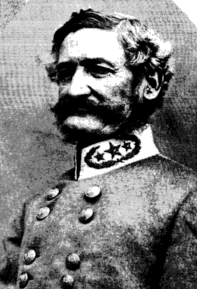
HENRY HOPKINS SIBLEY
Shortly after their arrival in San Antonio, Herbertís Battalion was formally assigned to the "Sibley Brigade," as the former the Army of New Mexico was now called.49 Their drunken and thoroughly discredited commander, Brigadier General Henry Hopkins Sibley, was not with them, however...shortly after his arrival in San Antonio he was called to Richmond to explain his conduct during the failed campaign in New Mexico. He would not return until December, 1862, and in the interim, the Brigade was commanded by Colonel Thomas Green.50
On December 2, 1862, General Henry Hopkins Sibley was ordered to New Iberia, Louisiana, there to take over, once again, command of the Brigade. Upon his December 25 arrival at Opelousas, La., enroute for New Iberia, he found that most of the Brigade had been ordered to Galveston by General John Bankhead Magruder, where they were to win a spectacular victory over a combined Union land and naval force which had captured Galveston harbor. However, Sibley reported that Herbertís Battalion was there in Louisiana with him, and had been "actively and usefully employed" in scouting "in the vicinity of Plaquemine and the Mississippi River."51
After their success at Galveston, the rest of the Sibley Brigade was ordered into Louisiana, rejoining their comrades of Herbertís Battalion and General Sibley. The Brigade was then assigned to an army under General Richard Taylor which was operating in support of the Confederate defenders of Vicksburg and Port Hudson. It was hoped that Confederate forces operating on the west bank of the Mississippi might draw Union forces away from Vicksburg, allowing other Confederate forces gathering at Jackson, Mississippi under General Joseph E. Johnston to relieve the besieged city Unfortunately for the Confederacy, such was not to be the case, and Vicksburg would surrender on July 4, 1863. But successful or not, this attempt to succor the Confederacyís last bastions on the Mississippi River would soon place the men of the Sibley Brigade in combat during the Bayou Teche Campaign.52
Captain Robert L. Swope would not lead Company A during the Teche Campaign. In February 1863, shortly after the arrival of the Sibley Brigade in Louisiana, Swope resigned as commander of Company A, apparently as a result of an ongoing feud with the commander of the Arizona Battalion, Lt. Colonel Philemon T. Herbert. First Lieutenant Tevis was placed in command, although he was apparently not promoted to the rank of Captain at this time.53

TOM GREEN
In April 1863, the Sibley Brigade (including Herbertís Arizona Battalion) was among the men with which General Taylor confronted the Yankee army under General Nathaniel Banks at Fort Bisland, on the Bayou Teche. The Battle of Fort Bisland was a defeat for the Confederates, and General Taylor ordered a retreat. General Sibley, in command of the rear guard, nearly lost his command at Franklin, Louisiana, when he (possibly under the influence of alcohol) ordered the last bridge across the Bayou Teche burned before his men had made their escape. Seeing the bridge in flames behind them, they quickly disengaged from the enemy and fled, the last of them crossing just as the bridge was fully engulfed in flames. Sibley was soon afterward court-martialed for this and other offenses, and although he was not convicted, he was removed from command of the Brigade. The popular Colonel Thomas Green, who had led the brigade with distinction in earlier campaigns, was promoted to Brigadier General and placed in command f the Brigade.54
The many skirmishes which took place as Taylorís army retreated before the advancing Union army of General Nathaniel Banks during April and May of 1863 gradually sapped the strength of Herbert's Battalion of Arizona Cavalry (whose three companies' combined strength had numbered no more than 180 men when the Battalion was formed in July 1862). In just one such fight, near New Iberia, Louisiana, Lieutenant Tevis would later report, Company A suffered the loss of more than 15 men who were "cut down by sabres."55 By the end of May 1863 the Battalion had been reduced to the point where it was no longer an effective organization, and it was broken up. Company A under Lieutenant Tevis still had enough men to continue as a viable company, and was kept in being as an independent company, attached to the Green's Brigade.. The other two companies of the Battalion (the former Arizona Guards of Pinos Altos and Arizona Rangers of Mesilla) were disbanded at this time, and the men within them were consolidated with Company A. The resulting combination would be henceforth known as the Arizona Scouts.56
Lieutenant Tevis and the men of the Arizona Scouts would now be re-united with their former commander, Sherod Hunter. As mentioned earlier, Hunter had taken a commission as Major in the Second Texas-Arizona Cavalry Regiment of the Arizona Brigade. The Arizona Brigade was broken up in May 1863, and the Second and Third Texas-Arizona Cavalry Regiments were assigned to Green's Texas Cavalry Brigade.57 As it happened, they arrived in Louisiana just as Herbert's Battalion was being broken up. Although there is no direct proof of it, Captain Tevis and the Arizona Scouts may have been attached at this time to the Second Texas-Arizona Cavalry Regiment..58
The surrender of Vicksburg (and the lesser Confederate bastion at Port Hudson, Louisiana) in July 1863 led to the retreat of Green's Brigade to the region of Shreveport, Louisiana. In November 1863, Lt. Tevis and the Arizona Scouts fought with Green's Brigade as they resisted a Union invasion up the Bayou Teche. In early December 1863 the brigade was recalled to Texas, in response to a threatened assault on Galveston by a Union naval force (which assault never materialized).59
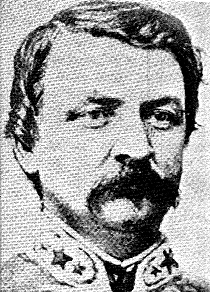
JAMES PATRICK MAJOR
In late December of 1863, while still encamped near Galveston, the Second and Third Texas-Arizona Cavalry Regiments were re-assigned to the Texas Cavalry Brigade commanded by Brigadier General James Patrick Major.60 It would seem that the Arizona Scouts went with them, as in February 1864 they were among the companies detached from various regiments (Baylorís, Chisumís, Crumpís, and Madisonís) of Major's Brigade to form a Scouting Battalion under the command of Major William Saufley. The Arizona Scout company became Company E of the Battalion, and James Henry Tevis seems to have finally been promoted to Captain at this time.61 Whether Saufley's Scouting Battalion ever was more than a paper organization, however, is uncertain, and during January and February 1864 it is known that Captain Tevis, along with his company, operated as part of a command under Colonel James Duff (33rd Texas Cavalry) near Indianola, Texas.62
CAPTAIN JAMES HENRY TEVIS, ARIZONA SCOUTS
Photo courtesy of the William J. Kelly Collection.
.On March 5, 1864, James P. Major's Texas Cavalry Brigade was ordered back to Louisiana to oppose the invasion then proceeding up the Red River by a combined Union army and naval force under Major General Nathaniel Banks. During this campaign, Major's Brigade was combined with two other cavalry Brigades (Green's Brigade, now commanded by Colonel Arthur P. Bagby, and a brigade of Louisiana regiments) to form a Cavalry Division under the command of now-Major General Tom Green. Captain Tevis and the Arizona Scouts fought as part of Major's Brigade during this campaign (whether as part of Saufleyís Battalion or attached to the Second Texas-Arizona Cavalry or to Duffís Regiment is unknown), participating in the major battles at Wilson's Farm (April 7, 1864), Mansfield (April 8, 1864) and Pleasant Hill (April 9, 1864), as well as numerous other skirmishes throughout the rest of the campaign. In one notable instance, on May 1, 1864 near Wilsonís Landing on the Red River, "after an exciting chase of 2 miles" the Arizona Scouts under Lt. John M. Smith assisted in the capture of a Union transport, the U.S.S. Emma. Her crew was made prisoner, and the vessel itself was burned. Captain Tevis had apparently been severely wounded, possibly at Mansfield (no contemporaneous record of his wounds exists, but after the war he stated that he had been wounded in both arms and lost a lung) earlier in the campaign, and the Arizona Scouts served under the command of First Lieutenant John M. Smith for the rest of the campaign.63
After the retreat of the Union forces and the abandonment of their Red River invasion, General Edmund Kirby Smith, commander of all Confederate forces in the Transmississippi, ordered the bulk of the Confederate troops in Louisiana to move north into Arkansas. The Texas Cavalry Division, which since the death of Thomas Green at the Battle of Blair's Plantation (April 12, 1864) had been under the command of Major General John A. Wharton, was among the units ordered northward. Major's Cavalry Brigade, including the Arizona Scouts, went with them. For the rest of 1864 the Arizona Scouts would serve in Arkansas, fighting minor skirmishes which would claim the lives of its members, and otherwise settling into the humdrum routine of picket duty and scouting between the lines.
Most, if not all, of the Arizona men yearned to return to their homes in Arizona. But this did not reduce the determination of the Arizonans to "stick it out to the end" if that was the only way that Arizona might yet be freed, and Tevis was no exception. In November of 1864, Captain Tevis (who by that time had recovered from his wounds and been restored to command of the Arizona Scouts) voiced this sentiment when he wrote to Dr. Lewis Owings. Owings was now acting as Confederate Arizonaís unofficial "Governor-in-exile" in San Antonio. Tevis wrote: "Here I am in this miserable State of Arkansas and praying every day that I may be ordered somewhere else...We are all ready to fight four years longer even if the government never gives us any clothing or pays us a dollar. I think we will be the last men to give up."64 As it turned out, Tevis was not far wrong.
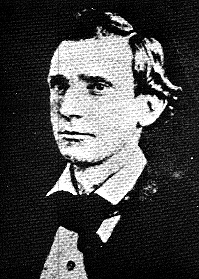
GENERAL JOHN A. WHARTON
As the year 1865 dawned, prospects for the Confederacy looked bleak, and only got worse as time wore on. Many Confederate soldiers in all theatres could see the handwriting on the wall, and desertion rose to unprecedented levels (of 358,692 men on the official rolls of the Confederate Army at the close of the war, a staggering 198,494 were absent from the ranks, leaving slightly over 160,000 actually in the field when the end came...55 percent of the entire army had deserted their posts and gone home).65 In the Transmississippi, mutinies occurred in many Texas units, including Wharton's Texas Cavalry Division. However, Captain Tevis and the Arizona Scouts did not take part in these mutinies, and were singled out for special praise by General Wharton for "remaining true to their colours" in a dispatch dated February 24, 1865.66
The collapse came in April 1865, with the surrender of General Robert E. Lee's Army of Northern Virginia, then of General Joseph E. Johnston's Army of Tennessee, signaling the end of effective Confederate resistance east of the Mississippi. Other eastern Confederate armies, such as that of General Sam Jones in Florida and of General Richard Taylor in Alabama, soon followed suit. By the time May was in full bloom, Kirby Smith's Army of the Transmississippi was the only significant Confederate fighting force still in existence.
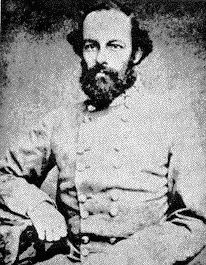
KIRBY SMITH
Many in the Transmississippi armies wanted to continue the struggle, including Captain James Henry Tevis, who six weeks after Lee's surrender was still exhorting his fellow Confederates to fight on to "victory or death, which will be preferable to subjugation."67 But the majority of Confederate soldiers could see that the end had come and simply wanted to go home, and the Army of the Transmississippi melted away like mist before the morning sun. General Edmund Kirby Smith, conceding at last the reality of Confederate defeat, surrendered all Confederate forces west of the Mississippi River on May 26, 1865, and shortly thereafter the Arizonans themselves had to admit the futility of continuing the struggle and gathered for their final muster at Hempstead, Texas.68 Of the 15 men who gathered that day, Captain Tevis would later recall, only three ever returned to Arizona.69 Tevis himself would be among these.
But the road back to Arizona would be a long one for Jim Tevis. At the close of the war, instead of moving to Arizona, he instead moved to St. Louis, Missouri, where he tried various occupations including streetcar conductor, riverboat captain, baker, grocer, and windmill inventor/promoter.70 While in St. Louis he met and married Emma Boston on December 24, 1866, by whom he would eventually have eight children (three sons and five daughters). He remained in St. Louis until 1877, when he moved to Kansas for 3 years (it is unknown what he did in Kansas or why he went there).71
In 1880, Arizona beckoned Tevis once again, and he moved, with his family, to Cochise County. He located 19 mining claims that year in the Chiricahua Mountains and the Dos Cabezas Mining District of Cochise County. He apparently settled at Tombstone for a while (right during the period of the famous showdown at the OK Corral), and his personal property at Tombstone assessed at $3,875 in 1882 and $6,075 in 1883.72
In 1884 Tevis moved to Tres Cebollas (Bowie Station) on the Southern Pacific Railway, where he operated the Southern Pacific Hotel. Over the next few years a settlement (what became the modern town of Bowie, Arizona) grew up around the railroad station and Hotel at that place, and it came to be called "Teviston," in his honour. On March 23, 1887, Tevis filed application for a homestead of 160 acres in Section 9, Township 13 South, Range 28 East, in Cochise County, claiming settlement in 1880. He was awarded a patent on this homestead on November 13, 1890, which covered not only his home-place but also the townsite of Teviston.73
James Henry Tevis may also, at about this time, have joined the United Confederate Veterans, the postwar fraternal and benevolent organization of former Confederate veterans. Although there is no documentary evidence of this, a photo of Tevis, taken about 1890, shows him in what appears to be a United Confederate Veterans uniform. It is known that he was nostalgic about his Confederate service, as he wrote letters during this period to the TUCSON CITIZEN newspaper describing it. So joining a local U.C.V. Camp would have been a natural thing for him to do during these years. Unfortunately, no records of the Arizona United Confederate Veterans Camps have survived, so this cannot be confirmed with certainty.
JAMES HENRY TEVIS, CIRCA 1890
IN WHAT APPEARS TO BE A U.C.V. UNIFORM
Courtesy of the William J. Kelly Collection.
In 1891, Tevis was elected as a representative from Cochise County to the House of Representatives, 16th Territorial Legislature. In 1897, he apparently moved to Tucson, where he operated the San Xavier Hotel. By 1903, he was back in Teviston, where on August 5 of that year he was appointed Postmaster. He would serve in this post until his death, at Tucson, on August 29, 1905 at the age of 69. He was buried in the family plot at Teviston (now Bowie) Cemetery.74
However, the town which was named after him no longer is. Today it is called Bowie. The story of how this came to be is rather amusing. Apparently, there was a dispute between Tevis and the local stationmaster of the Southern Pacific railroad, a man named Bean. Bean wanted the town to be named after himself. Tevis, who seems to have had a sarcastic sense of humour, said to Bean that heíd eaten nothing but beans three times a day, year after year, and had all he could stand. Needless to say, Bean was not amused, and he used his influence to see that the name of the town was changed.75 He was not successful until after Tevisís death. The name was finally, officially changed on March 18, 1911.76
What, then, can we finally say of James Henry Tevis? He was tough, fearless, independent, and resourceful, all qualities that we in Arizona cherish today. He made many contributions to the history and development of Arizona, especially to the mining and railroad industries in Cochise County. But today he is relatively unknown, save to historians. It would seem that stationmaster Bean had his revenge, after all. But, even though James Henry Tevis has been deprived of the wide recognition which having a town named in his honour might have provided, he deserves to be remembered, and it is hoped that this article will, in some small way, accomplish that object.
NOTES
1Arizona State University Library, Hayden Pioneer Biographies Collection, biography of James Henry Tevis, p. 1. The biography is internet accessible at the following URL;;;http://info.lib.asu.edu/archives/azbio/tevisj.pdf. Hereafter cited as Hayden.
2
Fanny Juda, "California Filibusters: A History of their Expeditions into Hispanic America," THE GRIZZLY BEAR (Official organ of the Native Sons and Native Daughters of the Golden West), Vol. XXI., No. 4; Whole No. 142 : February 1919. Excepts re-printed on the website of the Museum of the City of San Francisco, URL http://www.sfmuseum.org/hist1/walker.html. Hereafter cited as Juda.3
Hayden, p. 1.4
Juda.5
Juda.6
Hayden, p. 1.7
Marshall Trimble, IN OLD ARIZONA: TRUE TALES OF THE WILD FRONTIER. Phoenix, Arizona: Golden West Publishers, 1985, p. 114, hereafter cited as Trimble; L. Boyd Finch, CONFEDERATE PATHWAY TO THE PACIFIC: MAJOR SHEROD HUNTER AND ARIZONA TERRITORY, C.S.A. Tucson, Arizona: Arizona Historical Society, 1996, p. 252, hereafter cited as Finch, PATHWAY. Hayden, p. 1, stated that he came to Arizona "with the Overland Mail Company in 1857," but this is not correct, as it is known Tevis did not become an employee of the Butterfield Overland Mail Company until after his arrival in Arizona.8
Trimble, p. 141, states that Tevis was in Tucson in late August, but Finch, PATHWAY, p. 252, citing Tevisís own account, gives the July-September window.9
Trimble, pp 115-116.10
Trimble, p. 116; Hayden, p. 1.11
Trimble, pp 116-118.12
James Henry Tevis, letter to Governor C. M. Zulick, January 8, 1886, quoted in Hayden, p. 2.13
Tucson WEEKLY ARIZONIAN, April 24, 1860, quoted by Hayden, p. 1; Hayden, p. 2, also quotes Tevisís letter to Governor Zulick, January 8, 1886, which discusses his appointment as commander of the "first Rangers ever organized in the Territory."14
Hayden, p. 2.15
Trimble, pp 118-119.16
Trimble, p. 119.17
Trimble, p. 120.18
Finch, PATHWAY, p. 56.19
W. W. Mills, letter to John S. Watts, June 23, 1861, reprinted in Calvin P. Horn and William S. Wallace, CONFEDERATE VICTORIES IN THE SOUTHWEST: PRELUDE TO DEFEAT, Albuquerque, New Mexico: Horn and Wallace, 1961, p. 71, hereafter cited as Horn and Wallace; Odie Faulk, ARIZONA: A SHORT HISTORY. Norman, Oklahoma: University of Oklahoma Press, 1970, p. 101; Finch, PATHWAY, pp 63-64.20
Tevis, letter to Governor Zulick, January 8, 1886, quoted by Hayden, p. 2. Tevis does not give his reason for disbanding the company, but given the timing, it seems logical that he possibly disbanded it for the reason cited.21
Baylorís report of the events leading up the capture of the Union force, the subsequent creation of the Confederate Territory of Arizona, as well as the complete text of Baylorís Proclamation creating the Territory, are reprinted in Horn and Wallace, pp 33-39.22
Martin Hardwick Hall, THE CONFEDERATE ARMY OF NEW MEXICO. Austin, Texas: Presidial Press, 1978, p. 21, hereafter cited as Hall.23
Hall, p. 351; see also Finch, PATHWAY, p. 85. Hayden, p. 2, states that Tevis joined Captain Thomas J. Mastinís Arizona Guards at Pinos Altos, but this is not correct. The muster rolls of the Arizona Guards do not show Tevis ever enrolled in that unit...see Hall, pp 367-372...and the muster rolls of the San Elizario Spy Company do show him enlisted as a private in that company.24
Hall, p. 346.25
Captain Bethel Coopwood, report to Lt. Col. John R. Baylor, September 29, 1861, reprinted Horn and Wallace, pp 48-49. On a related note, Hayden, p 2, states that Tevis "participated in the fight...when Mastin was killed." This is also not correct. Captain Thomas J. Mastin of the Arizona Guards was mortally wounded on September 27, 1861 while repelling an Apache assault on the town of Pinos Altos. On that date, Private Tevis was engaged, with the rest of the San Elizario Spy Company, in battle with Union cavalry at Canada Alamosa.26
Finch, PATHWAY, p. 171 cites a letter from Baylor to Brigadier General Paul O. Hebert which stated that Hunterís company had been organized "for a regiment of Rangers." The original order creating the company has, alas, been lost to history. If so, he doubtless intended to pattern them on the famous Texas Rangers of his own home State, which had originally been organized for frontier defense.27
Hall, p. 362.28
L. Boyd Finch, "Sherod Hunter and the Confederates in Arizona," JOURNAL OF ARIZONA HISTORY, Spring 1969, pp 164-166.29
John Robert Baylor, orders to Captain Sherod Hunter, February 10, 1862, found in the Sherod Hunter "Jacket" at the National Archives, COLLECTIONS OF PRIVATE MILITARY PAPERS OF OFFICERS OF THE CONFEDERATE STATES ARMY.30
These aims, and others, were detailed in orders issued by Governor Baylor on February 9, 1862, reprinted in Finch, "Hunter," pp 202-203.31
John R. Baylor, orders to Sherod Hunter, February 10, 1862, in the Sherod Hunter "Jacket", National Archives.32
Sherod Hunter, in a report to John R. Baylor dated April 5, 1862, states that the command arrived in Tucson on February 28. The report is reprinted in Horn and Wallace, pp 200-201. However, on the day prior he had prepared a loyalty oath for one J. W. Jones, which was signed at Tucson on that date. So Company A had to have been in Tucson on February 27. See Finch, "Hunter," p. 170.33
Sherod Hunter, report to John R. Baylor, April 5, 1862, reprinted in Horn and Wallace, pp 200-201; Sherod Hunter, report to John R. Baylor, April 18, 1862, reprinted in Finch, "Hunter," pp 203-204; Captain William Calloway, 1st California Infantry, report to Major Edwin A. Rigg, April 18, 1862, reprinted in Finch, "Hunter," pp 205-206; John Ross Browne, ADVENTURES IN THE APACHE COUNTRY: A TOUR THROUGH ARIZONA--1864, New York: Harper and Brother, 1869, p 111.34
Finch, "Hunter," p. 173.35
Finch, "Hunter," p. 173.36
Finch, PATHWAY, p. 135.37
Sherod Hunter, report to John R. Baylor, April 18, 1862, reprinted in Finch, "Hunter," pp 203-204.38
Finch, PATHWAY, p. 153.39
A complete itinerary and history of the campaign from the perspective of the Union California Column can be found in Surgeon James M. McNulty, Acting Medical Inspector of the California Column, report to General W. A. Hammond, Surgeon General of the U.S. Army, October 1863, reprinted in Calvin P. Horn and William S. Wallace, UNION ARMY OPERATIONS IN THE SOUTHWEST, Albuquerque, New Mexico: Horn and Wallace, 1961, pp. 81-90, hereafter cited as Horn and Wallace, UNION.40
Finch, PATHWAY, p. 153.41
Hall, p. 363.42
Finch, PATHWAY, p. 164.43
Hall, p. 363; Finch, PATHWAY, pp 164-167; Colonel William Steele, report to General Samuel Cooper, Adjutant and Inspector General, C.S. Army, July 12, 1862, reprinted in Horn and Wallace, UNION, pp. 129-130; Brigadier General James H. Carleton, U.S. Army, report to Major Richard C. Drum, Assistant Adjutant General, July 22, 1862, reprinted in Horn and Wallace, UNION, pp 40-41.44
Finch, PATHWAY, p. 167.45
Hall, p. 363.46
Surgeon James M. McNulty, report to General W. A. Hammond, October 1863, reprinted in Horn and Wallace, pp. 81-90.47
An excellent discussion of the production and issue of undyed uniforms from the Huntsville Penitentiary and other sources in the Transmississippi West is found in Fred Adolphus, "DRAB: The other Confederate Color," CONFEDERATE VETERAN, September/October 1992, pp 36-41.48
National Archives, Compiled Military Service Records of Major Sherod Hunter, Second Texas-Arizona Cavalry Regiment; Captain Robert Swope, Herbertís Battalion, Arizona Cavalry; First Lieutenant James Henry Tevis, Hebertís Battalion, Arizona Cavalry.49
Finch, PATHWAY, p. 171.50
Jerry Thompson, "General Henry Hopkins Sibley," HANDBOOK OF TEXAS ONLINE, http://www.tsha.utexas.edu/handbook/online/articles/view/SS/fsi1.html.51
Brigadier General Henry Hopkins Sibley, report to Lt. General T. H. Holmes, 25 December 1862, found in United States War Department, THE WAR OF THE REBELLION: OFFICIAL RECORDS OF THE UNION AND CONFEDERATE ARMIES, Series I, Volume 15, pp 910-911. Hereafter cited as WAR OF THE REBELLION.52
Josephy, pp 169-170, 174; Finch, PATHWAY, pp. 180-181.53
Compiled Military Service Records, Captain Robert L. Swope, Herbertís Battalion, Arizona Cavalry and lst Lieutenant James Henry Tevis, Herbertís Battalion, Arizona Cavalry; Finch, PATHWAY, p. 181. A voucher for clothing for the company which was found in Lieutenant Tevisís Compiled Service Record shows that as late as June 1, 1863 (after Herbertís Battalion was broken up), Tevis was still signing documents as "1st Lieutenant, Commanding Company."54
Josephy, pp. 170-172.55
Letter from Captain James Henry Tevis to the TUCSON DAILY CITIZEN, January 6, 1899; see also Finch, PATHWAY, p. 181.56
Finch, PATHWAY, p. 182, 209; see also L. Boyd Finch, "Arizona in Exile: Confederate Schemes to Recapture the Southwest," JOURNAL OF ARIZONA HISTORY, Spring 1992, pp 67-68, hereafter cited as Finch, "Arizona."57
Stewart Sifakis, COMPENDIUM OF THE CONFEDERATE ARMIES--TEXAS, New York: Facts on File, 1995, pp 44, 48, hereafter cited as Sifakis58
A brief history of Saufleyís Texas Scouting Battalion, attached to Captain Tevisís Compiled Military Service Record from the time period when the Arizona Scouts were assigned as Company E of the battalion, states that the battalionís men had been "detailed from Baylorís, Chisumís, Crumpís, and Madisonís Regíts, Texas Cavalry." The "Baylorís Regiment" mentioned is in fact Colonel George Wythe Baylorís Second Texas-Arizona Cavalry Regiment. Since Sherod Hunter was a Major in this regiment, and since he was good friends with Captain Tevis, it seems likely that he might have "pulled strings" to get his friend Captain Tevis and the other Arizona men assigned to the Second Texas-Arizona. But there is no direct proof of this.59
Josephy, pp 186-188.60
Sifakis, pp 44,48.61
Compiled Military Service Record, Captain James H. Tevis, Company E, Saufleyís Texas Scouting Cavalry Battalion. See also the history of Saufleyís Scouting Battalion which is attached to the Captain Tevisís Compiled Military Service Record..62
Colonel James Duff, report to Major W. T. Mechling, Assistant Adjutant General, First Division, Army of Texas, January 29, 1864, in WAR OF THE REBELLION, Series I, Volume 34, Part II, p 927; Colonel James Duff, report to Captain E. P. Turner, Assistant Adjutant General, February 27, 1864, in WAR OF THE REBELLION, Series I, Volume 34, Part II, p. 1001.63
Their presence during this campaign is confirmed by Colonel George Wythe Baylor, report to Captain Ogden, Assistant Adjutant General, in WAR OF THE REBELLION, Series I, Volume 34, Part I, pp 616-625. The company is mentioned by name twice in this report, with the capture of the Emma being recounted in on p. 621. The wounding of Captain Tevis is not mentioned in the report, but First Lieutenant Smith is listed as being in command as of May 1, when the Emma was captured. Rich Saathoff, in his excellent article on Company A, states that Tevis was wounded at Mansfield, but the present author has been unable to find independent documentation of that. Saathoffís article can be viewed on the internet at: http://www.geocities.com/hardeeflag/arizonarangers/. Finch, PATHWAY, p. 209, cites Tevisís postwar claims.64
Finch, "Arizona," p. 67.65
Major Hardy Z. Bogue, "Confederate Manpower Mobilization," CONFEDERATE VETERAN, July/August 1989, p. 10.66
The report is cited in Finch, "Arizona," p. 84.67
Finch, "Arizona," p. 8168
Letter from Captain James Henry Tevis to the TUCSON DAILY CITIZEN, January 6, 1899.69
Finch, "Arizona," p. 81.70
Finch, PATHWAY, p. 244.71
Hayden, p. 3.72
Hayden, p. 3.73
Hayden, p. 3.74
Hayden, p. 3.75
Trimble, p. 120.76
Hayden, p. 3.
![]()
Some clipart on this page was used courtesy of
and
The music file of "Just Before the Battle Mother" was composed and is copyrighted by Benjamin Tubb. For more of his great tunes, visit his website, THE MUSIC OF THE AMERICAN CIVIL WAR. Great, ain't it?
![]()
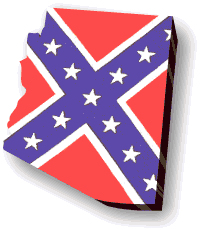 BACK
TO THE ARIZONA CONFEDERATES PAGE
BACK
TO THE ARIZONA CONFEDERATES PAGE
Copyright 2003 by the Colonel Sherod Hunter Camp 1525, Sons of Confederate Veterans, Phoenix, Arizona. All rights reserved. Last updated on 20 May 2003.